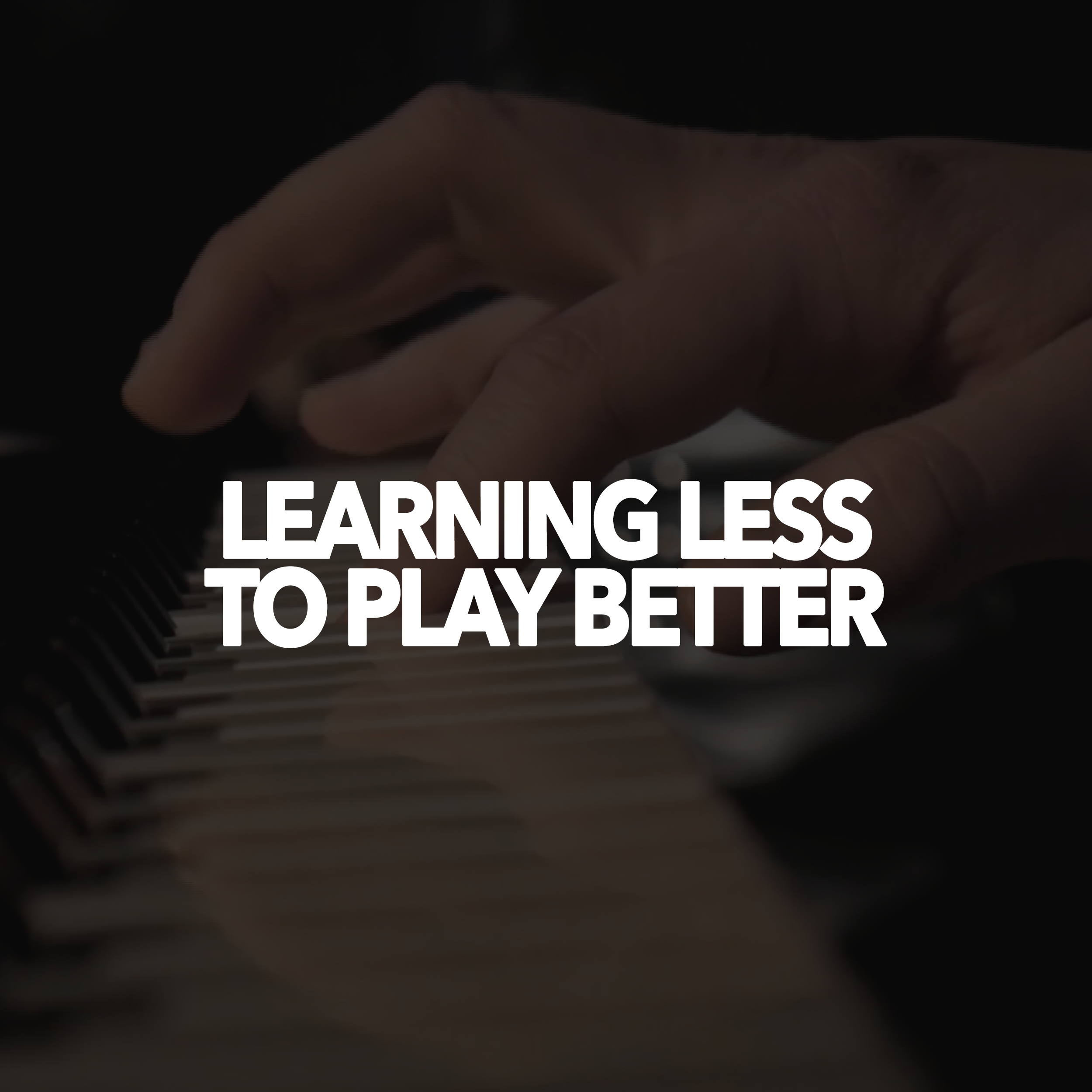
The Key to Creating a Richer Sound
There are many forms of art that we have in the world, including movies, TV shows, paintings, apparel, website design, interior design, and many others. Unlike “interior design”, for example, music is largely a representational form of art, meaning that we are trying to “represent” a feeling, a story, or an idea using sound…

The Secret to Playing Fast Isn’t About Speed at All
There are many occasions during the process of learning the piano where you might be required to play at a speed that is not only a technical challenge but also a mental challenge. In other words, in order to play at speed, you need to be able to physically move fast enough, and you need your brain to keep up…

How Learning Less Can Make You a Better Pianist
When I was a mere child, not only was I a much wider child than I was tall…but I also spent the vast majority of my time listening to songs and making an attempt at reproducing them on the piano. To do this, I’d roughly work out the chords and then the melody, and I would try mashing them together rather unsuccessfully…

The Secret to Expressive Piano Playing
Around 10 years ago I spent the vast majority of my week teaching students how to play the piano. One lesson would be a 4 year old that just wanted to run around the room. The next lesson would be a 75 year old that has some spare time and always wanted to learn the piano. Yet over the past 15 years, one thing I have consistently noticed is that at some point, most people starts practicing like a robot…

How Amateur Pianists Can Sound Like Professionals
This past Friday I took a trip to Roy Thomsons Hall in Toronto to watch Jan Lisiecki play Chopin’s Piano Concerto No. 1 alongside the Toronto Symphony Orchestra. While I was listening and thinking about the score (like a loser) I had two realisations:
Firstly, I was providing a community service by single handedly bringing the age demographic down by quite the margin…

5 Myths About Learning Piano
Before starting to learn the piano, there are many assumptions that beginners have. Some of these are entirely accurate; however, there are many that are much less accurate and might set you on the wrong path.
So here are some myths to make sure your expectations meet the reality of learning the piano…

How to Conquer Stage Fright and Play with Confidence
The fear of performance is a fear that is shared by both learning and experienced musicians alike. The difference is that experienced musicians become accustomed to the feeling and have built enough evidence that this feeling isn’t going to affect their performance…

The Best Warm-Up Routine for Pianists
As a pianist the idea of “warming up” might be a foreign concept. Many players sit down at the piano with limited time and with the aim of getting things done right from the very start. Yet our fingers and our brain are often not yet primed to make the most of a practice session and as you improve on the piano, your ability to have complete control over your physical and mental capabilities becomes increasingly important…

Why Every Wrong Note is a Step Towards Mastering Music
Having taught beyond a thousand students one-to-one over the past 15 years I have come to notice particular patterns in how different people approach learning an instrument…

Why Technical Skill Isn’t Enough in Music
If we zoom out, the pursuit of music is a very romantic pursuit. We all relate music to particular moments in our lives and given the right circumstances it can elicit quite a visceral emotional reaction. No doubt we all have the experience of playing a song on repeat 5000 times because it sounds so good! To some extent this experience is an innate feature of being a human.

10 Surprising Life Lessons You Can Learn from Playing the Piano
Learning music and learning the piano can teach us a lot about life and help us grow as people. While all of these lessons apply to life, in the interest of helping those that are learning the piano, I’ve focused much more on how music helps us learn them!

Playing Music with Flexible Dynamics
Dynamics are a fundamental part of reading and performing music. They guide the volume that we play and they give us a great deal of information about how the music is supposed to feel. However, dynamics are often not quite as detailed and helpful as you may expect.

The Myth of Coordination on the Piano
Many people believe that learning and playing the piano requires a large amount of multitasking. Although we do occasionally have to do some amount of multitasking, it doesn’t play as big of a role as you may think. ..

Playing For Your Family This Christmas
We are now 2 days away from Christmas and for many musicians (particularly piano players) it is a time to dust of the Christmas music and entertain the family, community or ourselves with some of the classic tunes that everyone loves…

When and How to Memorise Music
If you have ever played a piece of music on the piano by reading sheet music, you will likely have experience of memorising the music. For most of us, this happens accidentally as you repeat sections of the music over and over again. There is, however, one small problem with this…

How to Develop a Musical Idea
When trying to compose or write music, one of the biggest challenges is working out how to approach the writing process. How do you come up with ideas? How do you put those ideas into a suitable format? How do you keep it interesting? These are the questions that make up the music writing process. So let’s try to answer them!

Methods For Improving Your Relative Pitch
Being able to hear notes, note relationships and chord qualities is a fundamental part of being a musician. It is an even more fundamental skill for playing by ear or improvising.

Freeing Your Piano Playing From Inversions
Inversions are a music theory concept that is widely taught to music students as a way of understanding that the notes that make up a chord can be moved around.
The lesson usually looks something like this:

Using Pedal Point and Ostinatos to Create Effective Music
In many of these articles I have mentioned that much of music plays with the idea of familiarity. The more familiar a listener is with a musical idea, the more they feel comfortable listening to it and can predict what is going to happen next. This is why pop music tends to use a repeating four chord sequence and the chorus comes back several times with little change. However, it can be difficult to strike a balance between “familiar” and “boring”.

How to Borrow Chords from Different Keys
There are many ways that we can make a piece of music sound more interesting to listen to. One nice way to make music sound more interesting is by using borrowed chords. A borrowed chord is a chord that doesn’t belong to the key or the scale that the piece of music is using. Let’s say we have a piece of music in the key of G major, if we take a chord that doesn’t belong to the key of G major then we can consider this a borrowed chord taken from a different scale or key. Unlike a key change or a modulation, borrowed chords are typically for just a single chord and don’t change the general key of the piece of music.